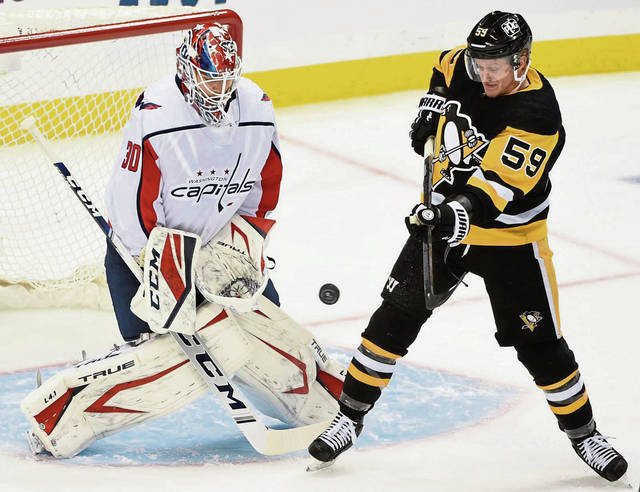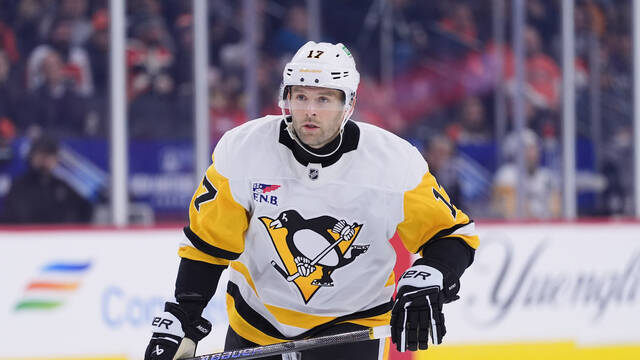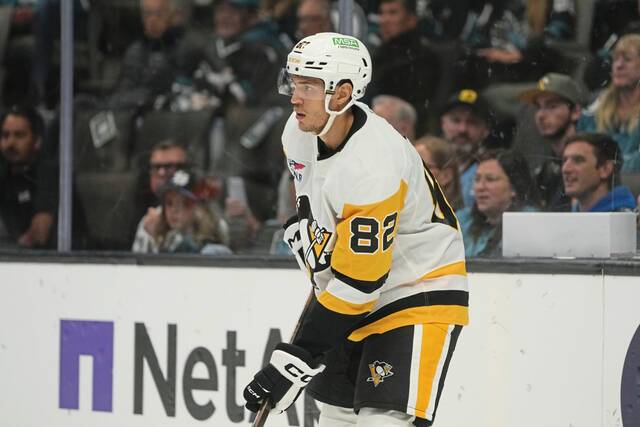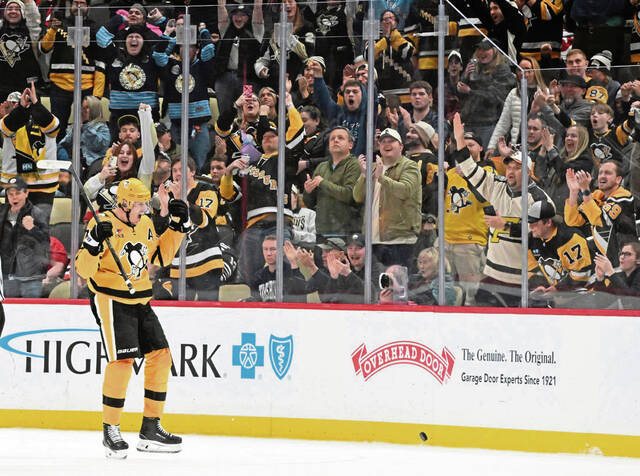Patric Hornqvist is back where he belongs.
He’s jabbing, hacking, slashing and generally vexing any goaltender with a considerable lack of social distance as a net-front presence on the top power-play unit.
The only difference this year is he is performing that task with a better suntan.
Now a member of the Florida Panthers, Hornqvist has enjoyed something of a career renaissance at age 34. Through Sunday, he led the Panthers with nine goals in 20 games.
In 2019-20, he scraped out 17 goals in 52 games.
Five of his goals this season have come on the power play.
His former team, the Pittsburgh Penguins, have nine power-play goals this season, 26th-most in the 31-team NHL.
Do the Penguins miss him, particularly on their power play?
Perhaps. But they didn’t appear to have a place for him on the top power-play unit last season as he was deployed with that group only on the repeated occasions injuries ravaged the lineup.
During the team’s brief postseason run in August — when the roster was relatively healthy — the Penguins’ first power-play opportunity against the Montreal Canadiens during the preliminary round featured a unit involving forwards Sidney Crosby to the right of the cage, Evgeni Malkin in the right circle, forward Jason Zucker on the left wall and defenseman Kris Letang at center point.
As for the net front? That was occupied by Jake Guentzel who was recovered from a debilitating right shoulder injury he suffered just before New Year’s Eve.
Hornqvist eventually got on the ice for the late stages of that power-play opportunity but with the second unit.
He eventually would get some time with the top squad as the Penguins coaches tried anything and everything to get their stagnant offense going against a stout Canadiens defense.
By the time he was traded in September for defenseman Mike Matheson and forward Colton Sceviour, Hornqvist no longer was the first power-play unit’s bolted-on net-front presence in the eyes of management.
In all reality, that assignment slowly has transitioned to Jake Guentzel for a handful of seasons.
On paper, Guentzel and Hornqvist have similar dimensions. Each are 5-foot-11, and only few cheeseburgers with extra bacon separate the 180-pound Guentzel from the 189-pound Hornqvist.
But there isn’t enough paper to write a book on how different they approach the roles.
Hornqvist utilizes chaos, and Guentzel dabbles in calculation.
That is to say Guentzel will go to the net, but he is selective on the occasions he does it as he searches for well-timed shooting lanes in which he could tip shots or screen a goaltender at the precise moment a teammate fires from the perimeter.
Hornqvist? He just went to the net and stayed there hoping his presence could lead to something positive, as it often did.
This season, Guentzel and, to a lesser degree, Bryan Rust have been the Penguins’ primary net-front presences. Combined, they probably won’t have nearly as many welts on their bodies in comparison to Hornqvist.
But given the Penguins’ emphasis on movement with their current power-play scheme, Guentzel and Rust aren’t supposed to be Hornqvist.
“My experience of coaching our power play has been that it’s at its best when there’s movement, when there’s player movement, when the puck moves and we establish a shot,” coach Mike Sullivan said via video conference. “When those three things take place, our power play has the ability to be instinctive, and that’s when they’re at their best. (Assistant coach Todd Reirden) has added some dimensions to that but the main themes have not changed.
“It all depends on personnel tendencies that may create a perception that there’s completely different looks. For example, (Hornqvist) was a guy that brings a unique skill set, right? He tended to gravitate to the net an awful lot and was there an awful lot. We’ve had multiple people at the net. Sometimes Sid’s at the net. Sometimes Jake’s at the net. Sometimes (Rust) is at the net. By nature of the movement, I think that’s what occurs. But the scheme hasn’t been drastically different.”
So, essentially, the net-front presence is asked to do the same thing but through a much different method.
“When (Hornqvist) was here, he, obviously, loved to be in front of the net,” Rust said. “With the unit we’ve got now, I think when guys find themselves there, they’re trying to take the goalie’s eyes away when it’s time. And then kind of pop off to the side of the net when there’s a play to be made, like a little low play or something. But I think it stays pretty much the same.”
“It’s probably not as set as it was before where (Hornqvist) was typically there,” Crosby said. “A bunch of the time, he may have been in and out a bit. But for the most part, that’s where he liked to set up shop. We tended to read off the middle and the goal line a little bit more. With that spot now, I think it’s more by committee. Just guys who are there try to create a screen or deflections and things like that. But it’s probably not as set as it was with (Hornqvist) there, for sure.”
Regardless of the nuts and bolts of it, the Penguins haven’t enjoyed a great deal of success on the power play this season while Hornqvist has excelled in that area with the Panthers.
It’s safe to say they probably miss him in a lot of ways that go beyond the power play or even the rink. But the transition to Guentzel as the primary option in that role is something that has been in the works for years.
Now, it’s the only option.
“You’re going to have to go to the hard areas,” Guentzel said. “It’s tips. It’s rebounds. It’s loose pucks. That’s where you can convert on a lot of goals. … That’s just what we’ve got to keep doing.”








